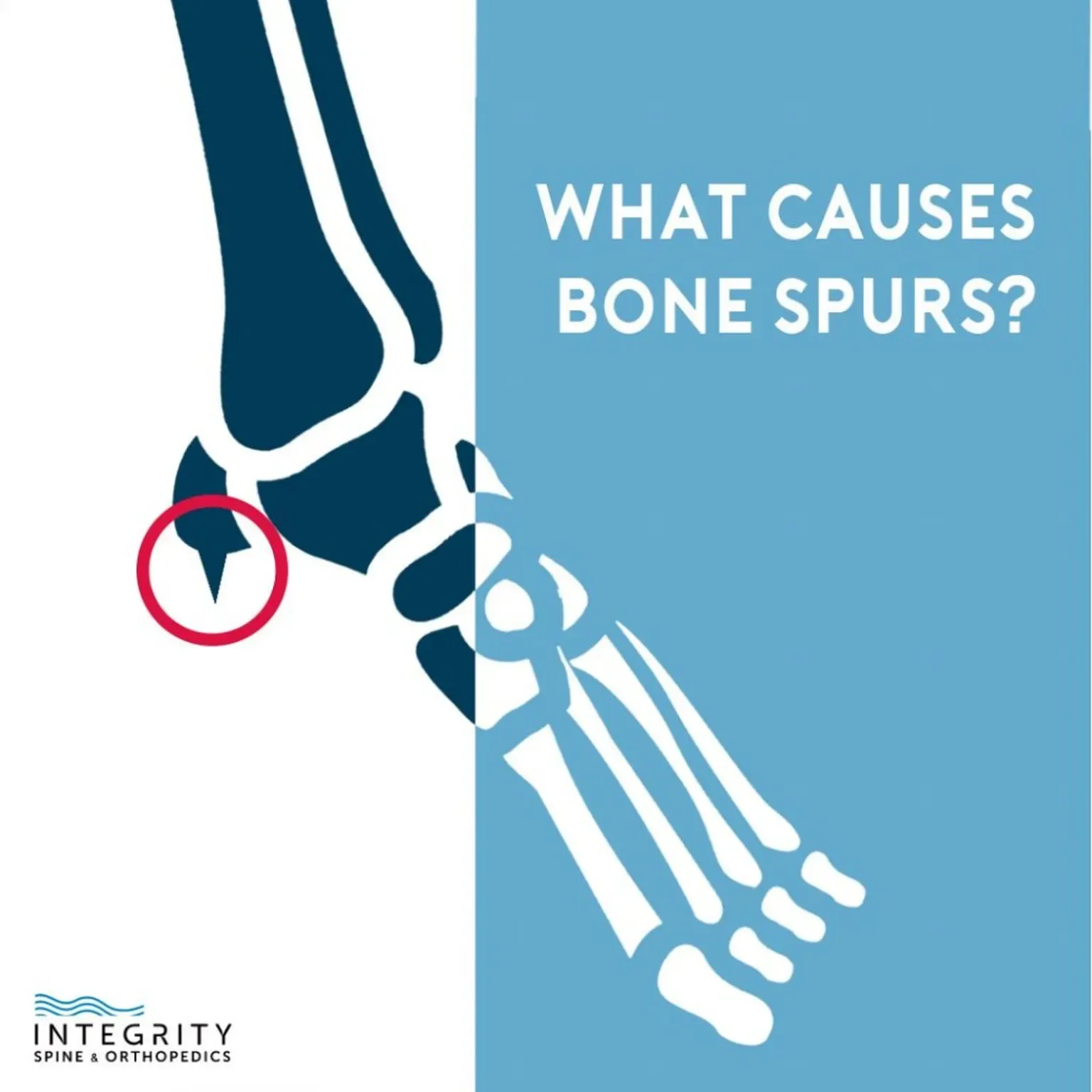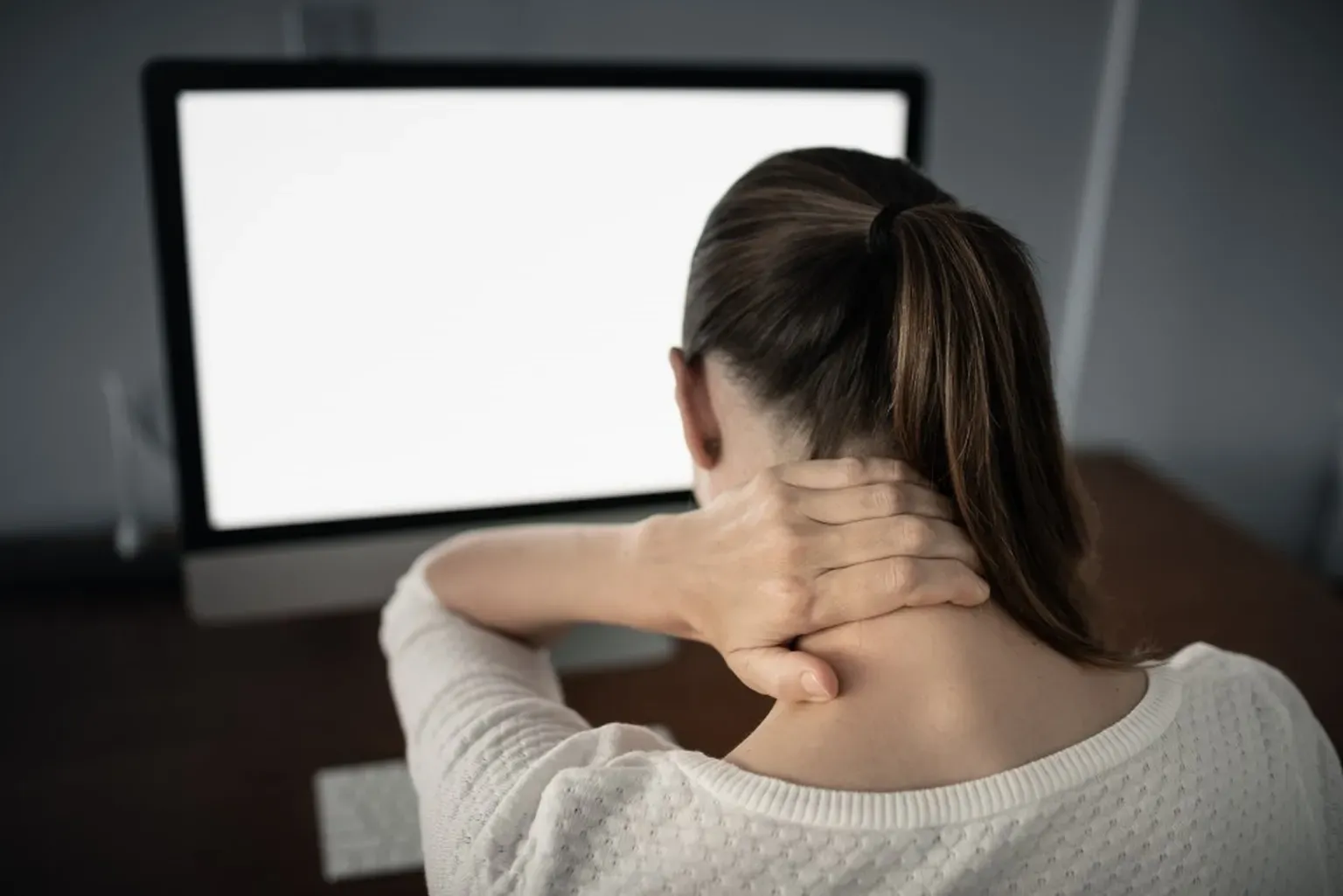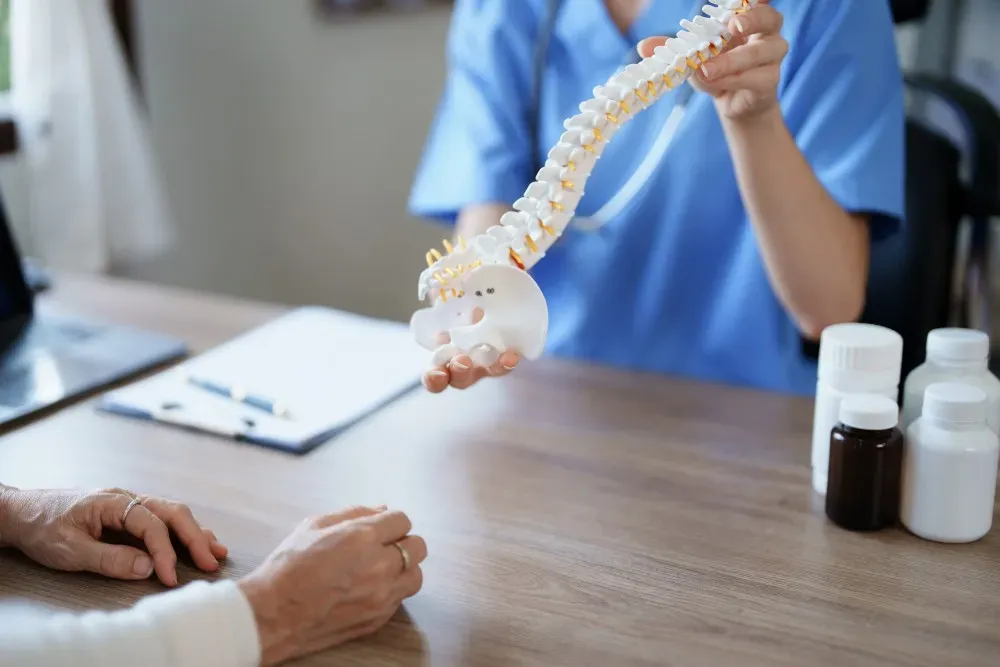Neurosurgery & Orthopedic Surgeons in Jacksonville

What Causes Bone Spurs?
Bone spurs (osteophytes) are small projections of extra bone that form on the ends of bones, usually in the joints. If you’ve ever felt small, hard bumps in your fingers, toes, or heels, you may be feeling a bone spur.
Bone spurs (osteophytes) are small projections of extra bone that form on the ends of bones, usually in the joints. If you’ve ever felt small, hard bumps in your fingers, toes, or heels, you may be feeling a bone spur.
Bone spurs aren’t always painful. In fact, many people live with bone spurs for years without knowing of their existence. But bone spurs can also be a significant cause of joint pain, loss of movement, nerve pain, and other symptoms. Keep reading to learn more about what causes bone spurs and how to treat them.
WHAT CAUSES BONE SPURS?
Bone spur formation is part of the body’s repair response to excess stress, pressure or inflammation.
The most common cause of bone spurs is joint damage from osteoarthritis. Osteoarthritis develops when the smooth, tough cartilage covering the ends of joints begins to break down and erode. Cartilage erosion causes pain, swelling, inflammation, and bone-on-bone friction during joint movement. The body creates new bone material in response to inflammation and increased stress in an effort to repair the damaged cartilage and bone. Osteoarthritis-related bone spurs commonly occur on the spine, knees, hips, shoulders, neck, hands and feet. Age is the biggest risk factor for developing osteoarthritis and arthritis-related bone spurs.
Another cause of bone spur formation is tight or inflamed ligaments that lead to local inflammation. Achilles tendonitis and plantar fasciitis can cause bone spurs to develop on the heels, while rotator cuff tendonitis can lead to bone spur formation on the shoulders. Activities or occupations that place a lot of pressure on the feet (running, dancing, nursing, retail), obesity, and wearing poorly fitted shoes are all risk factors for developing feet and heel bone spurs. Activities or occupations that require a lot of overhead lifting (tennis, baseball, painting, construction) are risk factors for developing bone spurs on the shoulders.
COMPLICATIONS OF BONE SPURS
In many cases, bone spurs remain undetected and undiagnosed for years. You may not even know you have bone spurs until an X-ray or another imaging study reveals them. However, sometimes these bony overgrowths significantly affect your health and well-being. They can lead to symptoms and complications, including:
- Soft tissue damage. Bone spurs lead to pain, stiffness, swelling and inflammation when they press against or irritate nearby tendons, ligaments or muscles. Over time, bone spurs rubbing against muscles or tendons can cause the tissues to break down or tear.
- Loss of motion. Bone spurs can restrict joint movement and cause reduced range of motion in the affected joints.
- Loose bodies. Sometimes, bone spurs break off the joint and become trapped in the joint lining. These loose bodies can cause the joint to lock up, making movement difficult.
- Nerve compression. Bone spurs that develop in the spine can cause pain, weakness, numbness, and tingling if they pinch or compress nearby nerves. Osteophytes contribute to spinal stenosis — a condition that occurs when the spaces within the spine tighten and compress nerves as they exit the spinal canal.
Seek medical advice from your doctor if you’re experiencing any of the above signs or symptoms.
TREATMENT OPTIONS
Bone spurs only require treatment if they’re causing pain or damaging nearby tissues or nerves. Asymptomatic spurs may be monitored by your doctor, but they require no further treatment than that.
There are several home remedies that can ease bone spur pain and symptoms, including over-the-counter medications (like acetaminophen or ibuprofen), ice and heat therapy, and rest from aggravating activities. If you’re overweight, losing weight can take stress off the joints and relieve symptoms. If pain persists, your doctor might recommend:
- Cortisone injection. A corticosteroid shot can help relieve inflammation, swelling and pain around irritated tissues or nerves.
- Physical therapy. A course of physical therapy can help you learn exercises and stretches to take pressure off joints, strengthen surrounding muscles, and improve range of motion.
- Surgery. If non-surgical methods aren’t effective, surgical options are available to remove bone spurs.
FIND STATE-OF-THE-ART ORTHOPEDIC AND SPINE CARE AT INTEGRITY SPINE AND ORTHOPEDICS
Whether you’re suffering from an acute injury or chronic pain, Integrity Spine and Orthopedics has the orthopedic care, pain management, sports medicine, and minimally invasive surgery services to help you to get back on your feet and back to doing the activities you love.
Call us today or reach out online to schedule your first appointment in our Jacksonville, FL clinic.




